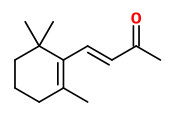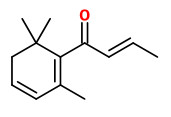Prunus salicina Lindl. - syn.Prunus triflora Roxb. - Rosaceae
李 li (chin.), Japanese plum, Chinese plum, Japanische Pflaume, Chinesische Pflaume
„Prunus salicina should not be confused with the Prunus mume, a related species of plum also grown in China, Japan, and Korea. Another tree, the Korean cherry - (Prunus japonica), is also a separate species despite having a Latin name similar to Prunus salicina's common name.“
http://en.wikipedia.org/wiki/Prunus_salicina
Conspecific taxa: http://www.ars-grin.gov/cgi-bin/npgs/html/taxon.pl?463136
- Prunus salicina var. cordata (nai plum)
- Prunus salicina var. mandshurica (Ussurian plum, Ussurische Pflaume)
- Prunus salicina var. pubipes (毛梗李 mao geng li)
- Prunus salicina var. salicina (李(原变种) li (yuan bian zhong))
„The most important compounds of P.salicina [aroma, with higher odor units] are β-ionone (despite its low concentration, this compound has a very low odor threshold) and nonanal, as well as hexyl acetate in ‘Blackamber’.“ Fruits of the ‘Blackamber’ clonal accessions showed higher concentrations of the volatile compounds than ‘Friar’, also for hexanol, hexanal, phenylacetaldehyde, hexyl acetate and y-dodecalactone.
[Comparative study of the aromatic profiles of two different plum species: Prunus salicina Lindl and Prunus simonii L., Gomez, E., Ledbetter, C.A., Journal of the Science of Food and Agriculture, 65(1), 1994, 111-115]
„The aroma volatile compounds of three commercial Japanese plum cultivars (Pioneer, Laetitia and
Angeleno) were determined for a seven week period to include samples from three different maturity
stages (immature, harvest and tree-ripe) over two fruiting seasons. HS-SPME was used for extraction
coupled with GC-TOFMS for separation and identification. A total of 35 different compounds was
identified with 10 of the compounds found to be generic amongst the three cultivars, viz. hexanal, 2-hexenal, hotrienol, linalool, trans-linalool oxide, cis-linalool oxide, p-menth-1-en-9-al, β-damascenone, 2-bornene and α-terpineol. Each cultivar had five unique compounds resulting in different aroma profiles for
each of the maturity stages and distinct separation patterns using discriminant analysis. The compounds
contributing most to the distinctness of the maturity stages within a cultivar were identified and found to
be different from the compounds identified as important for separating the cultivars.“
[Louw, E. D. (2011). Aroma profiles and non-destructive determination of quality parameters of Japanese plums (Prunus salicina Lindl.) (Doctoral dissertation, Stellenbosch: University of Stellenbosch).] http://scholar.sun.ac.za/handle/10019.1/6528

Prunus salicina, Yinzhou District, China (2025) © yanfumu CC BY-SA 4.0 inaturalist.org




